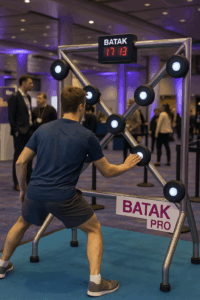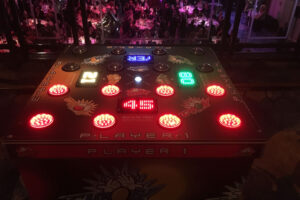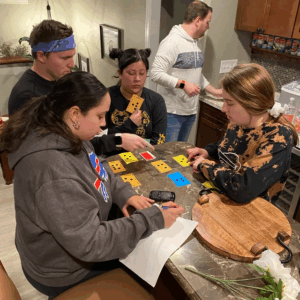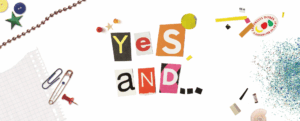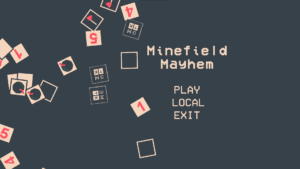Let’s be honest: most “team-building events” are cringe-worthy, overly corporate, or just boring. What would it be like to slide in some actual collaboration and bonding—without anyone realizing they’re doing a trust fall?
The trick is simple: make it enjoyable first, strategic second. These bottom-of-the-list games have been designed with your group in your mind—to get them fired up, grinning widely, and yes, quietly enhancing communication, trust, and working together. Here are eight of them.
1. Batak Pro Hire
How It Works: Players face a light-up targets reaction board with hundreds of targets. Players ring each one as fast as they can when the lights flash at unpredictable intervals in order to score a high score in a short span of time.
Why It Encourages Teamwork: Because it is played individually most of the time, however, when played in team relays or high-point competition, Batak Pro is a team-building activity. Players yell encouragement, offer advice, and watch one another play. It easily builds camaraderie as well as competitiveness.
Fun Factor: It’s fast, addictive, and gets even the most reluctant players in for a second go.
2. Strike a Light
How It Works: Two players play against each other, slapping light-up pads as they flash in unpredictable sequences. Simple in theory: hit more lights than your opponent before time runs out.
Why It Encourages Teamwork: Brilliant in tournament formation, this game encourages friendly rivalry and support. Teams strategize on reflex drills, stand together, and high-five one another when they succeed. It’s a competition, but it’s a hype generator as well.
Fun Factor: Strike a Light provides adrenaline-filled action in brief, powerful doses.
3. Connect 4 Basketball Hire
How It Works: A sports and childhood classic mashup, players roll mini basketballs into columns of a gigantic vertical board. Goal? Align four of your colored balls in a row—the same as in the board game.
Why It Encourages Teamwork: It’s a lot of strategy. Teams need to decide who shoots when, block opponents, think ahead of several plays. It encourages communication as well as coordination.
Fun Factor: Sporty and strategic, Sportopolis draws players of any skill set—and there’s always something fresh to spot in this one-of-a-kind game.
4. Basketball Arcade Game
How It Works: It’s like playing arcade-style basketball —shooting quick shots in a time period, typically with rising point values as long as you play.
Why It Encourages Teamwork: Set up this as a team relay or cumulative scores activity. Players move quickly, yell encouragement, and cooperate in striving for personal bests. Even non-athletes can’t help but get involved.
Fun Factor: It is easy, recognizable, and immediately uplifting.
5. Marshmallow Tower Challenge (With a Twist)
How It Works: Teams receive dry spaghetti, some tape, some string, and a marshmallow. Challenge: create the tallest freestanding tower possible that will hold the marshmallow at the top.
Twist: Replace one of your team members with a member of another team in the middle of a challenge. It adds a planning curveball and will force teams to adapt.
Why It Encourages Teamwork: It’s a time-honored case of working under duress. Teams have to think outside of the box, listen clearly, and move nimbly.
Fun Factor: In between crashing towers and last-second rescues, it’s utter pandemonium—and comedy gold.
6. Puzzle Hunt (Mini Escape Game Style)
How It Works: Set up some stations or challenges wherein groups need to employ group logic, memory, or problem-solving abilities. Each one they complete gives them a clue towards the next.
Why It Fosters Teamwork: It demands diverse kinds of thinking—you can be sure all players have a chance to contribute. There is natural leadership rotation, and teams learn early to work with one another’s strengths.
Fun Factor: It achieves that good “a-ha!” feeling, putting quiet players in the limelight when they figure out a clue.
7. “Yes, And…” Story Circle
How It Works: Sit in a circle. Start with one member telling a story in one sentence. The next adds to it with “Yes, and…” and continues with the story. Keep going around until it ends in absurd hilarity.
Why It Promotes Teamwork: It boosts active listening, acceptance of ideas, and creativity. It is especially useful in releasing new groups or diverse departments.
Fun Factor: These stories go haywire in no time, setting up in-jokes and shared chuckles long after events have concluded.
8. Minefield Mayhem
How It Works: Create a “minefield” using cones, boxes, or any other soft objects. A team member is blindfolded and must navigate it using only verbal commands given by teammates.
Why It Encourages Teamwork: This is nothing more than just-old-school trust-building in a different guise. It sharpens communication, breeds patience, and educates teams in the art of giving (and receiving) direction.
Fun Factor: It’s extremely frantic and guarantees memorable moments—when one of your team members just slips past a “mine” because they panicked.
Final Thoughts
The best team-building events have no sense of team-building at all. These events besides have a focus on enjoying oneself while they build just those skills good teams have: trust, adaptability, communication, and group problem-solving. Whether it’s a corporate offsite, retreat, or simply something to spice up a regular workday, these team-building activities will bring your team together—without eyes being rolled.


